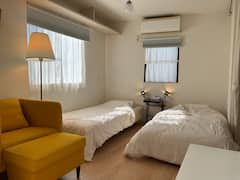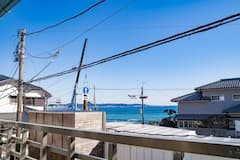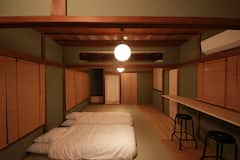Jomyo-ji Temple is a temple located on the east side of Kamakura from JR Kamakura Station. The temple is most well-known for its beautiful traditional dry landscape garden, called karesansui in Japanese, where visitors can choose to have green tea and sweets while viewing this calming garden. It is a Zen Buddhist temple of the Rinzai sect and at this time of the year, you are greeted by a beautiful plum tree right in front of the temple.
Welcome to Jomyo-ji Temple

Jomyo-ji Temple is located roughly 20 to 25 minutes on foot from JR Kamakura Station. This temple was once called Gokuraku-ji Temple. Jomyo-ji Temple is right next to Kamatari-inari-jinjya Shrine, a shrine said to be the origin of the name of the city, Kamakura.
Jomyo-ji Temple was built by Ashikaga Yoshikane Shogunate back in 1188 and is most well-known for the beautiful garden. The tea house, Kisenan, was also historically created in the 15th century in a place where monks enjoyed having tea. It was restored in 1991 and has allowed many visitors to enjoy tea with sweets while viewing the famous garden. Because of the garden, many visitors to Kamakura enjoy going to this temple, even on a rainy day, since it provides a space to appreciate the beauty provided by the temple.
Relax and take a break at the traditional dry landscape garden

One of the most popular attractions of Jomyo-ji Temple is the famous garden. It is not just a garden, but is a traditional dry landscape garden called karesansui in Japanese. The rock garden is located on the left side of the main hall in a separate building when you stand straight in front of the main hall. You can walk to the garden and admire the beauty of it, but if you want to take a little break, you can get a traditional green tea, matcha, and some traditional sweets to view the garden at Kisenan as well. At Kisenan, there are seating areas inside of the café building as well as outside, so if you visit on a sunny spring day, you should take an advantage of the weather and sit by the garden to enjoy little bit of a Zen moment. There are two green tea and Japanese sweet sets available and they cost 600 JPY (5.38 USD) to 1000 JPY (8.96 USD).
Enchanted by the beautiful flowers of the temple

When I visited the temple, it was early March and the plum flowers were in full bloom. Right in front of the temple gate, there was beautiful white plum tree, welcoming every visitor to the temple and as you go inside, you also see vivid koubai, a red flowered plum tree, found in the back cemetery area giving such an impression with the blue sky in the back. As cherry blossom season is about to begin, visitors get to enjoy seasonal flowers when visiting Jomyoji Temple. If you are not traveling this spring, this temple’s autumn leaves are also well-known for their beauty in November and December, so you can plan a visit in autumn as well.
You might be interested in these Airbnbs!
Take a rickshaw ride and tour around Kamakura

When you visit Kamakura, you most likely run into rickshaws that you do not see in just any city in Japan. Rickshaws, jinrikisha in Japanese, are only seen in tourism centered towns like Kamakura, Asakusa, and Hakone. Kamakura is a flat city, so it won’t be too hard to walk around to visit historical sites, but there are a lot of beautiful temples and shrines so if you get tired, it is not a bad idea to try riding a rickshaw. You can ride alone or with a partner and the driver will take you to places of your choice around Kamakura.
At the entrance of Jomyo-ji Temple, there was a rickshaw parked for a couple who was visiting the temple. Jomyo-ji Temple happens to be located little away from the center of Kamakura, so if you decide to have a little different experience, maybe take a rickshaw to your next travel destination. Having your own personal guide to tell you stories about Kamakura will make your day even more special.
Lost in Kamakura at Jomyo-ji Temple
When you search online for Jomyo-ji Temple, everyone mentions about the beautiful garden where you can not only view, but also take a break with traditional Japanese tea with sweets. If you have not yet tried Japanese traditional green tea, matcha, this is definitely a great opportunity for you to try the rich, often bitter taste of real green tea. The temple itself is not large, but even on a rainy day, it is worth visiting Jomyo-ji Temple for the garden. On a sunny day, you may also run into friendly cats who also seem to be fond of this temple. It is only 100 JPY (0.9 USD) for adults to enter and 50 JPY (45 USD) for children to enter.
History
Get Trip101 in your inbox
Unsubscribe in one click. See our Privacy Policy for more information on how we use your data




















Create an account to